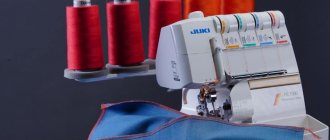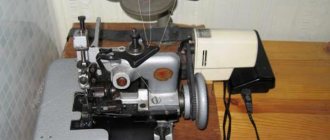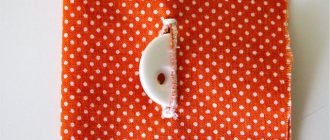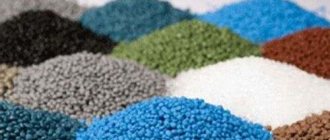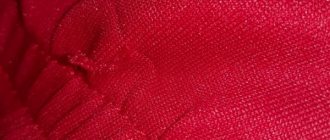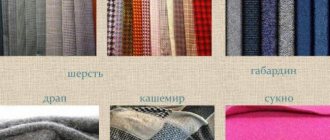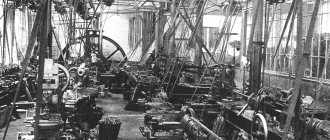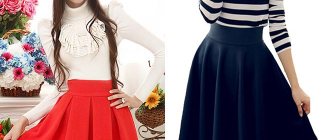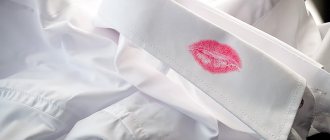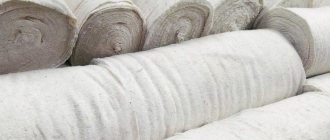To get a beautiful, even stitch on things, you need to take into account many factors. One of them is a competent choice of threads. If they do not correspond to the type of material or needle size, the stitches will be uneven, ugly, or missing completely.
Sometimes the thread simply breaks, which suggests a malfunction of the equipment, but more often the reason is the wrong choice. What factors should you pay attention to when selecting? What types are they presented in?
Types of threads and nuances of operation
Each sewing machine comes with instructions that indicate how to use a certain type of thread depending on the material. Sewing products are represented by the following types:
Cotton
A universal solution that goes well with handmade work, which is important both when sewing a new item and when restoring an old one.
They are in demand both among sewing masters and beginners. Cotton products are inexpensive and suitable for any material.
A universal solution is size 50, but if the fabric is too thin, tears and holes in the stitch area are likely.
With a high density of the material being processed, on the contrary, the strength may be too low, which can lead to ruptures.
Polyester
Synthetics ensure a beautiful, even stitch. Due to the smoothness of the fibers, there are no roughnesses in the stitch area that are characteristic of other materials. The threads are elastic and can withstand some tension without causing even minimal damage.
A modified solution is a polyester thread in a cotton sheath, combining the advantages of both options.
Reinforced
The special structure of the fibers ensures maximum elasticity and resistance to mechanical stress. Domestic marking is determined by the type of material.
LH - cotton-based thread, LL - flax, LS - wool. Thickness is also indicated; the higher the number, the thinner the product.
Nylon
They withstand contact with water, including long-term contact, and are characterized by fairly high rigidity, and therefore are used in the production of shoes, bags and other accessories subject to high loads. In clothing, nylon threads can be used for hidden stitches. The thread is formed from one fiber, or from several, the structure affects the strength.
Silk
Contrary to popular belief, it is permissible to use silk threads not only with fabrics made from similar raw materials or wool, but also with others. They are quite expensive, but are characterized by color fastness and do not fade with regular ironing or high-temperature washing.
The main point is to choose the correct size and focus on the structure of the material being sewn.
Special types of threads are used to decorate clothes and form unusual embroideries and patterns. Special threads with metallized fibers and impregnations with compounds capable of accumulating and emitting light are also suitable for these purposes.
Story
Thread has always been important for people, since it could be used to sew clothes to protect themselves from the cold and cover the body from the external aggressive environment. Once upon a time, sewing thread consisted of fine hairs from animal skins. It was used to sew together large pieces of hide and fur. Let's get acquainted with the history of the origin of thread production.
The Egyptians knew how to make them from plant fibers and the wool of domestic animals rather than wild ones. They were the first to use berries and plant substances in the production of colored and permanent dyes to make threads more attractive. But humanity owes the birth of silk fibers to the Chinese and Japanese.
During the Middle Ages, advances in shipping, wool production and processing, and the opening of the Silk Road to Asia provided fertile soil for the flourishing of woven tapestries and handicrafts. Seamstresses and needlewomen were inspired and began to use threads for home sewing or embroidery.
During the Industrial Revolution, these products began to be manufactured on a large scale in factories equipped with high-speed machines. The machines helped create a more uniform thread with fewer defects. Over time, it was possible not only to achieve high quality products, but also to diversify thickness, colors and other characteristics.
Now that everything is more or less clear, you should find out how threads are made today, as well as what modern materials are used in the modern and high-tech production process.
Marking features
To understand the marking, you need to consider that threads can be natural, mixed, or synthetic.
For example, the classification of natural threads is as follows:
- Cotton (cotton). In their pure form, they are rarely used, as they lack strength and wear resistance. Their area of application is sewing clothes that must meet the most stringent requirements for hygiene and safety, for example, baby undershirts, diapers;
- Silk (c), viscose (c) - mainly used for decorative purposes, in needlework, embroidery;
- Linen (marking varies depending on the manufacturer and country of manufacture) - used when working with heavy, high-density fabrics, for example, tarpaulin for backpacks and travel bags.
Synthetic and combined threads are presented in the following categories:
- Reinforced (LH, LL, LS) - the most durable and universal. The thickness is different, varies from 36 to 80, so you can choose a solution for sewing clothes from thin fabric, and for making shoes from thick leather, specialized textiles;
- Polyester threads, including staple threads (L, LSh). The products withstand contact with moisture, are elastic and very durable. Staple threads are used for sewing knitwear, thick polyester threads are used for shoes, bags, leather accessories;
- Polyester textured (PT). The most common solution for sewing knitwear, they are cheap, elastic and durable;
- Polyamide (K). They are used infrequently, can withstand prolonged contact with moisture, but, unfortunately, are afraid of temperature fluctuations.
Foreign brands actively use metric numbering, in which the first number indicates the number of meters of thread in its gram. A number separated by a fraction indicates addition. Also, foreign brands fix the direction of twist: s – left, z – right.
The number of folds affects the quality; the more, the better.
What are the different thread compositions?
The threads used for sewing must first of all be durable and also suitable for specific tasks. For example, the composition of threads for sewing clothes, embroidery and patchwork will be completely different.
But let's take things in order. Conventionally, sewing threads can be divided into three groups:
- natural;
- synthetic;
- mixed.
We will tell you about the Aurora sewing thread collections, which are produced in accordance with international Environmental Specifications and are certified “OEKO-TEX® STANDARD 100”. All spools are equipped with a thread lock, which guarantees careful and neat storage.
Principles for selecting threads based on shade, shine, and fabric quality
The listed indicators are of greatest importance during selection. In addition, the fibers must be uniform; this indicator can be assessed by examining the threads on fabric of a contrasting tone. The main quality parameter is a smooth structure with no compactions or knots. Strength can be determined by tension; at its average value, ruptures are unacceptable.
You can choose the thickness of the thread according to the type of product being manufactured and the characteristics of the fabric:
Children's clothes, knitwear, products based on natural cotton. The best option is standard size 40 cotton threads.
Light items made of chiffon, tulle. The best solution is a 70-80 size reel.
Thick fabric used for tailoring suits is processed with 50-70 threads.
Thin products made from dressed wool, satin, and synthetics look great when processed with threads with a thickness of 40 to 70.
For heavy, dense fabrics (such as tarpaulin), artificial, natural leather, strong threads of 30-40 are used.
Silk threads are the most versatile, therefore, there are essentially no restrictions on compatible fabrics.
Description
Threads are usually called thin, twisted fibers made of natural or synthetic materials. They are produced on reels, coils, skeins or paper sleeves.
It is worth considering how sewing threads differ from yarn. These terms are confusing and often used erroneously interchangeably.
So, sewing thread differs from yarn in that it is used for sewing clothes or other products. Yarn is a collection of fibers used to weave or knit textile fabric. However, it's worth remembering that thread can be made from yarn, but yarn is not made from thread.
They have different structures, densities and other technological characteristics. When classifying the types of threads, we can distinguish natural and synthetic.
Classification by finishing features
According to the type of finish, the following materials can be distinguished:
- Matte (feature: complete lack of shine, maximum light absorption);
- Glossy (characterized by shine, making the item more unusual);
- Harsh (made from a material that cannot be cleaned or bleached);
- Standard plain, colored, white or black threads;
- “Smoking” type threads. They are needed to create a gathered effect on the fabric. When treated with heat, they form shrinkage, the stitching tightens, taking the base material with it. The relief features are determined by the type of seam and the structure of the material;
- Threads with special processing that gives them certain properties. For example, this category includes materials treated with a reflective substance or a composition that ensures the ability to withstand open fire.
Natural threads
This group includes silk, cotton, linen threads, etc., and the second group includes those made from polyamide or polyester chemical fibers. Silk thread is best suited for sewing wool and silk fabrics. This is a strong, very elastic and thin material. Silk is also used for sewing clothes, finishing the edges of buttonholes, and for sewing on buttons.
Cotton threads are made from cellulose and are used for sewing fabrics that are of plant origin (linen, viscose and cotton). Plant-based fabrics may shrink. Cotton thread, which has the same feature, allows you to maintain the integrity of the product. In addition, it is often used for basting when sewing clothes.
Quality checking
To purchase a truly high-quality thread, you need to be guided by several points:
It is better to focus on products from trusted brands that are respected by experienced seamstresses.
Unnamed Chinese goods are cheap, however, the markings on the spool do not always correspond to reality; there is a high probability that, for example, the reinforced threads will contain cheaper, low-quality fibers that are not strong enough for sewing some things.
You need to unwind the spool a little and inspect the thread. A high-quality product is smooth to the touch, its thickness is uniform along the entire length, there are no lumps or excessively thin areas. If this condition is not met, then tears will form in thin places, and folds of fabric will form in thick places.
Unfortunately, defects cannot always be seen with the naked eye, and in this case even minimal deviations are important. To avoid mistakes, you need to conduct an inspection using a magnifying glass.
You should also check the uniformity of the shade. If the color is the same along the entire length, this means that the manufacturer strictly adheres to production technology.
Any deviations are clearly visible against a contrasting background. For example, the quality of black thread can be easily checked against the background of contrasting white fabric.
The thread needs to be tightened a little. Any thread has a small reserve of elasticity if it is of high quality, regardless of the material. The rupture will follow only after some tension has been felt.
Expert opinion
Maria Anishchenko
Experienced seamstress, total experience 18 years
Practice shows that threads made from natural raw materials, be it cotton or linen, need to be checked most carefully. Synthetics are cheaper, easier to produce, and do not require the manufacturer to use expensive machines and equipment. Low-quality synthetic threads are very rare.
Quite often there are old threads on the farm that are already 2-3 decades old. Thrifty housewives are trying to use them in business, but this is a wrong decision.
The thread seems to be a very simple product, however, if the temperature and other storage conditions are not observed, the material is destroyed and the structure loses its uniformity.
This affects not only the quality of sewing, but can also damage the mechanisms of modern sewing machines. Even a small knot will lead to jamming; you will have to stop work and carefully remove the material from the work area.
Collection of natural threads Aurora
Aurora Cotton threads No. 50/3 are produced at a factory in one of the Indian regions, which is famous for the production of high quality cotton.
Composition – 100% cotton. For shine and silkiness, they undergo the procedure of gas scorching and double mercerization. At the final stage of production they are treated with wax. They have increased tensile strength due to the 3-strand twist. The rich palette consists of 40 colors, which allows you to choose the most suitable shade for the main background of the textile product. Winding on a reel with a lock, length 180 meters.
Natural collections of threads are resistant to high temperatures (they do not melt, unlike synthetic ones). They are used as universal threads for sewing bed and kitchen textiles and clothing. Suitable for various fabrics, hand and machine sewing, stitches.
Note! Numbering of cotton threads is traditionally carried out according to the English system. The lower the number, the thinner the thread, and vice versa, the higher the number, the thicker the thread.
Correspondence table for material, needle numbers and thread markings
| Material | Type of thread | Needle number |
| Lightweight fabrics. Finished cotton fabrics of minimal thickness, artificial and natural silks, synthetics, knitwear | Cotton threads thickness from 80 to 100, polyester - from 60 to 80, nylon - from 80 to 100 | 9-11 with thread thickness from 70 to 80 |
| Medium weight fabrics. Cotton fabric, satin, canvas, wool, which has undergone appropriate processing. | Cotton threads thickness from 50 to 80, polyester - 50, nylon - 50-80 | 11-14 |
| Heavy fabrics. High-density wool, specialized reinforced tarpaulin, aimed at making bags, tourist clothing, protective suits, fabric for sewing curtains, thick jeans. | Cotton threads – 40-50, polyester – 50, nylon – 50-60 | 14-16 |
| Elastic materials, e.g. double jersey, special fabrics for sports overalls. | Polyester – 50-80, nylon 50 | 11-14. It is better to use special needles designed specifically for working with synthetic fabrics. |
Collection of synthetic threads Aurora
Most general purpose and specialty sewing threads are 100% synthetic fibers.
They glide perfectly, are resistant to tearing, and are quite elastic. They are ideal for working with a sewing machine or overlocker. They go well with any type of material. For example, Aurora Talia universal polyester threads are made from 100% staple polyester. Unlike ordinary synthetic fibers, they are as close as possible in structure and appearance to cotton. They are distinguished by greater strength and less shrinkage. The rich palette consists of 386 colors, which makes it possible to maximize the color of the thread to match the tone of the fabric. The Aurora collection features high-strength polyester threads of several types. All series are presented in the product catalog.
Note! The larger the synthetic thread number, the thinner it is.
For example, Talia series No. 120 - standard, universal, thin threads. And the Talia No. 30 series is thicker, they are used for finishing denim products, decorative works and hand stitching.
Natural materials have always been and remain a priority for consumers. They act as a standard for external and tactile characteristics. But in terms of strength and wear resistance, they are inferior to their synthetic colleagues.
Natural silk is distinguished by its unsurpassed shine, airiness, and pleasant tactile properties. However, it is not among the durable ones. Therefore, artificial silk was created, the advantages of which are similar to natural silk, but its wear resistance and strength are much higher.
Aurora Tytan series No. 60E are made of 100% polyester silk. The threads are resistant to fading, chemical attack, low elongation, tear resistance, and abrasion resistant. The stability of the twist ensures comfort when working. The threads have a noble shine, which makes them indispensable for sewing shoes, outerwear, products made from complex and technical fabrics, sports and work equipment.
The exact opposite of the elastic, low-stretch, tightly twisted Tytan thread is the textured Aurora Texar No. 200E. Untwisted overlock threads are made from 100% polyester textured yarn. But this does not mean at all that they are less popular and are not in demand. The Texar series has high sewing properties, they are elastic and moderately fluffy. The overlock stitch gives the effect of a thin and smooth seam. Ideal for working with delicate and highly stretchable materials. As a rule, they are used for processing the seams of sections of children's clothing and sewing underwear.
Despite the fact that natural threads are highly valued by consumers for their quality characteristics, synthetic fiber has higher physical properties. Products sewn with polyester threads wear better and withstand numerous washes. Machine and overlock seams do not tear, do not stretch, and do not fade over time.
How to choose threads for a specific material
In order not to make a mistake with your choice, carefully study the basic requirements for threads for certain fabrics and materials:
- When selecting, pay attention to the thickness of the fabric. If the thread is too thick for the material being used, there is a risk that the seams will pull together, leaving holes behind. Thus, the product will be damaged. If you take a thread that is too thin, there is a high risk of seams diverging, which will break at the slightest impact. So we come to the conclusion that we learned at the stage of choosing a needle: the thickness of the thread should correspond to the thickness of the material used;
- If you plan to sew products from natural materials (linen, cotton), choose cotton threads. This type is also preferable to use when sewing clothes for babies. When working with thin fabric or wool, give preference to silk thread. But products made of polyester or nylon imply the use of synthetic;
- when making haberdashery leather products: bags, gloves, shoes, and so on, choose threads made of polyamide (nylon). And wear-resistant reinforced ones (for example, with braided cotton, viscose) are ideal for working with dense and heavy fabrics;
- when selecting, it is also necessary to take into account color combinations. They must be in harmony. However, in some cases, when it is necessary to highlight a certain line, use threads of contrasting colors. If you have problems finding a specific color, don’t despair! Threads slightly darker than the fabric will do, but threads that are too light will draw attention to themselves and stand out on the product.
And, of course, purchase all sewing materials in quantities that are enough to sew the entire product!
Mixed thread collection Aurora
The main discovery for many readers may be the last section.
We will talk about threads that contain both natural and synthetic fibers. Few people know that reinforced threads are not 100% synthetic. They have a polyester core and 100% cotton braid, which greatly increases strength while maintaining a small thickness.
Thus, Aurora Artyn threads No. 120 are absolutely identical in thickness to universal Talia No. 120. However, Atryn is more resistant to tension and abrasion. Reinforced threads are recommended to be used not only for overlocking work, where increased strength is required, but also for stitching. Increased strength while maintaining the plane of the seam is not superfluous.
Reinforced threads also include threads for darning and finishing of denim products Aurora Nokton No. 80C. The cotton sheath increases the thermal stability of the threads and protects the core from the high temperature of the needle.
Each Aurora brand reel has a label. It contains information that will help you correctly select threads for a specific type of fabric. In our online store you will find all the necessary accessories for needlework. Sew with pleasure and let your products be flawless.
Kinds
Cotton threads can be divided into two large groups:
- Mercerized look. These threads are very popular. Typically, manufacturers use the Egyptian variety for this process, which has long fibers. This process was invented by the English scientist George Mercer.
- Non-mercerized look. It is distinguished by its resistance to various chemicals. After prolonged exposure to light and water, the material retains its properties for a long time. It is also hygroscopic, hypoallergenic and heat resistant.
Egyptian cotton can be classified as a separate group. They have the greatest length and strength. It does not shrink when washed. It is also hypoallergenic, hygroscopic and breathable.
Important! Natural 100% cotton threads also have some disadvantages. Among them, strong shrinkage during washing stands out and such things become very wrinkled. For this reason, it is worth taking samples and measuring their sizes before and after washing.
Sometimes cotton threads are mercerized
